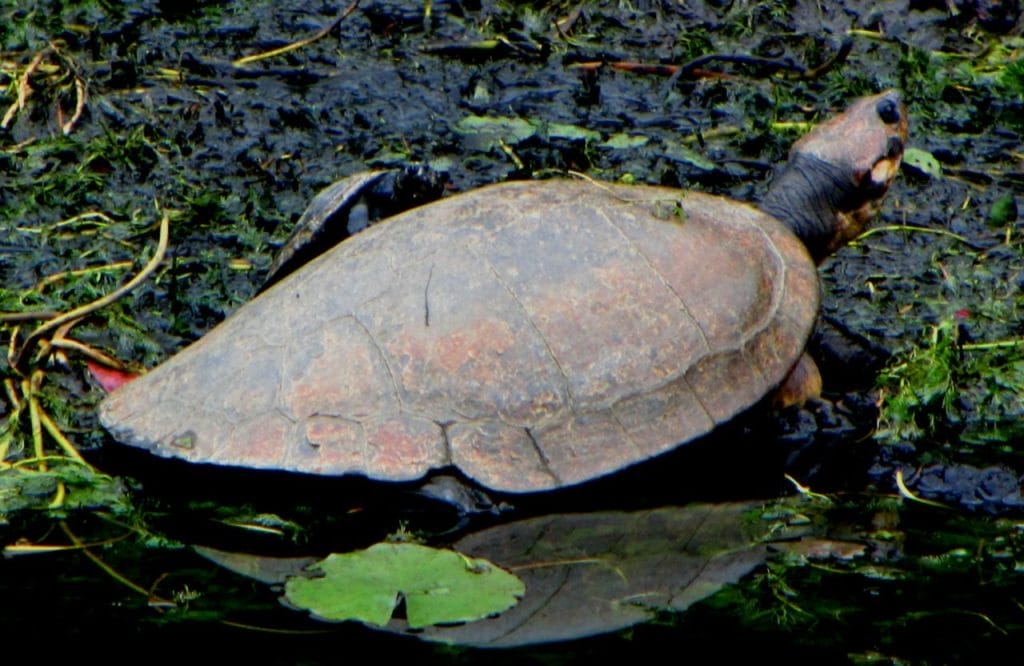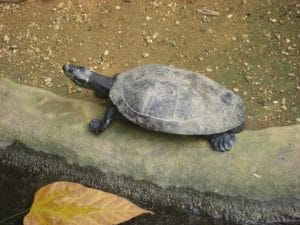Podocnemis lewyana (Magdalena River Turtle)
Home > Turtle Database > Podocnemis lewyana (Magdalena River Turtle)

Podocnemis lewyana is a freshwater turtle found only in Colombia. It’s known for its smooth shell and gentle nature. Sadly, this species is now highly endangered due to human activities.
Native To These Regions
Magdalena River (Colombia)Native Turtle Species Map – Find Turtles by Region
Scientific Classification
Kingdom: Animalia
Phylum: Chordata
Class: Reptilia
Order: Testudines
Family: Podocnemididae
Genus: Podocnemis
Species: P. lewyana
Common Names
Magdalena River Turtle
Colombian River Turtle
This Hilarious Turtle Book Might Know Your Pet Better Than You Do
Let’s be real—most turtle care guides feel like reading a textbook written by a sleep-deprived zookeeper.
This one’s not that.
Told from the snarky point of view of a grumpy, judgmental turtle, 21 Turtle Truths You’ll Never Read in a Care Guide is packed with sarcasm, sass, and surprisingly useful insights.
And hey—you don’t have to commit to the whole thing just yet.
Grab 2 free truths from the ebook and get a taste of what your turtle really thinks about your setup, your food choices, and that weird plastic palm tree.
It’s funny, it’s honest, and if you’ve ever owned a turtle who glares at you like you’re the problem—you’ll feel seen.
Identification
Description
This turtle has a smooth, oval-shaped shell that can grow up to 44 cm in length. The shell is usually olive or dark brown. Its limbs are strong and adapted for swimming, with webbed feet. The head is relatively small with a rounded snout.
Sexual Dimorphism
Females are much larger than males. Males have longer tails and a slightly concave plastron (bottom shell), while females have a flat plastron.
Check more turtles from the Podocnemis genus
Native Origin and Distribution
Geographical Range
This species is found only in Colombia, specifically in the Magdalena and Sinú River basins. It’s an endemic species, which means it doesn’t exist anywhere else in the world.
Preferred Habitat
Podocnemis lewyana lives in slow-moving rivers, swamps, and floodplains. It prefers areas with sandy or muddy banks for nesting and often stays in shallow waters during dry seasons.
Behavior
Feeding Habits
It is mostly herbivorous, eating aquatic plants, fruits, and algae. Sometimes it may eat insects or small invertebrates, especially when young.
Predators
Eggs and hatchlings are eaten by birds, fish, and mammals. Humans are the main predators of adult turtles, harvesting them for meat and eggs.
Reproduction
Breeding Season
Mating usually happens between June and October. Nesting follows shortly after, during the dry season.
Reproductive Method
Females lay their eggs in nests dug in sandy riverbanks. A single clutch can have 10 to 30 eggs. After about 70 to 130 days, the hatchlings emerge.
Conservation
Extinction Status
Critically Endangered (IUCN Red List)
Threats
Main threats include egg collection, hunting of adults, river pollution, and dam construction that disrupts their natural habitat and nesting sites.
Conservation Measures
Some local and national programs are working to protect nesting sites. Education campaigns and breeding programs are also in place. Captive breeding and habitat restoration are being tested.
Economic Importance
Historically, local communities have harvested the turtle for food and eggs. This provided income but led to overexploitation. Conservation programs now focus on turning these communities into protectors of the species instead of hunters.
Interesting Facts
This turtle plays a key role in seed dispersal in river ecosystems. It’s one of the few South American river turtles that nest during the dry season instead of the rainy season. Scientists use its nesting patterns to monitor the health of river systems in Colombia.

About Author
Muntaseer Rahman started keeping pet turtles back in 2013. He also owns the largest Turtle & Tortoise Facebook community in Bangladesh. These days he is mostly active on Facebook.














